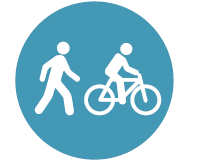 A goal of this project is to incorporate design standards for improved bicycle and pedestrian safety treatments to provide more options during project development and planned improvements constructed by developers.
A goal of this project is to incorporate design standards for improved bicycle and pedestrian safety treatments to provide more options during project development and planned improvements constructed by developers.
Providing a transportation system for people using all modes promotes active transportation for all ages and abilities, makes transit more accessible, reduces the potential for crashes (which reduces roadway injuries and fatalities), can improve community health and help lower greenhouse gas emissions.
Bicycle riding in a traffic lane or in an adjacent on-street bike lane in places with heavy traffic increases the potential for crashes and creates an uncomfortable experiences for all users. The proposed standards update includes a minimum requirement of a 6.5-foot bike lane separated from traffic with a painted striped buffer on all arterials and collectors, with options for more protection where desired.
The following images show potential design options for more protection, intended to make bicycle travel more comfortable for all.
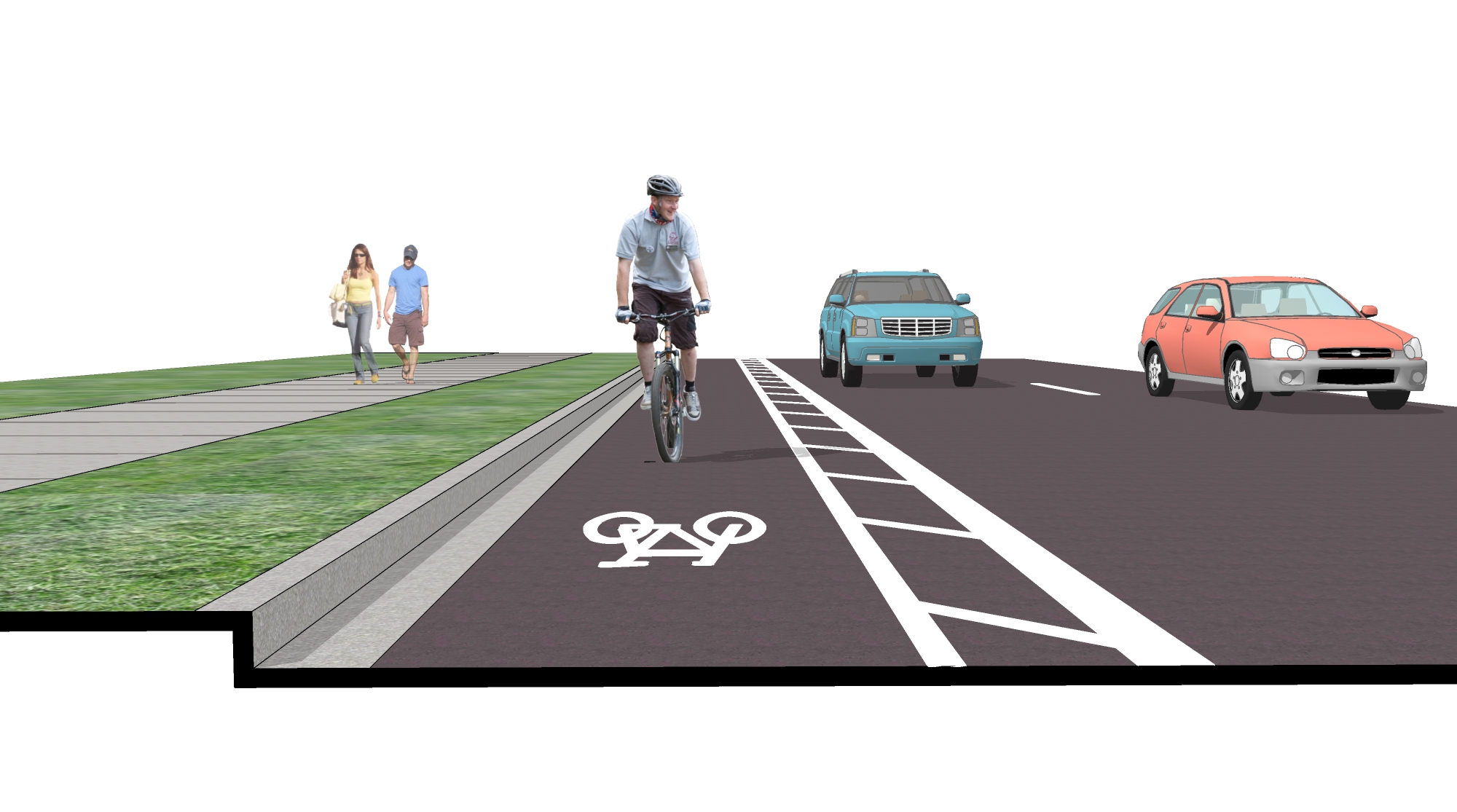
Buffered bike lane. Buffered bike lanes are street-grade facilities that provide additional space for bicyclists and visual separation from travel lanes through a striped buffer.
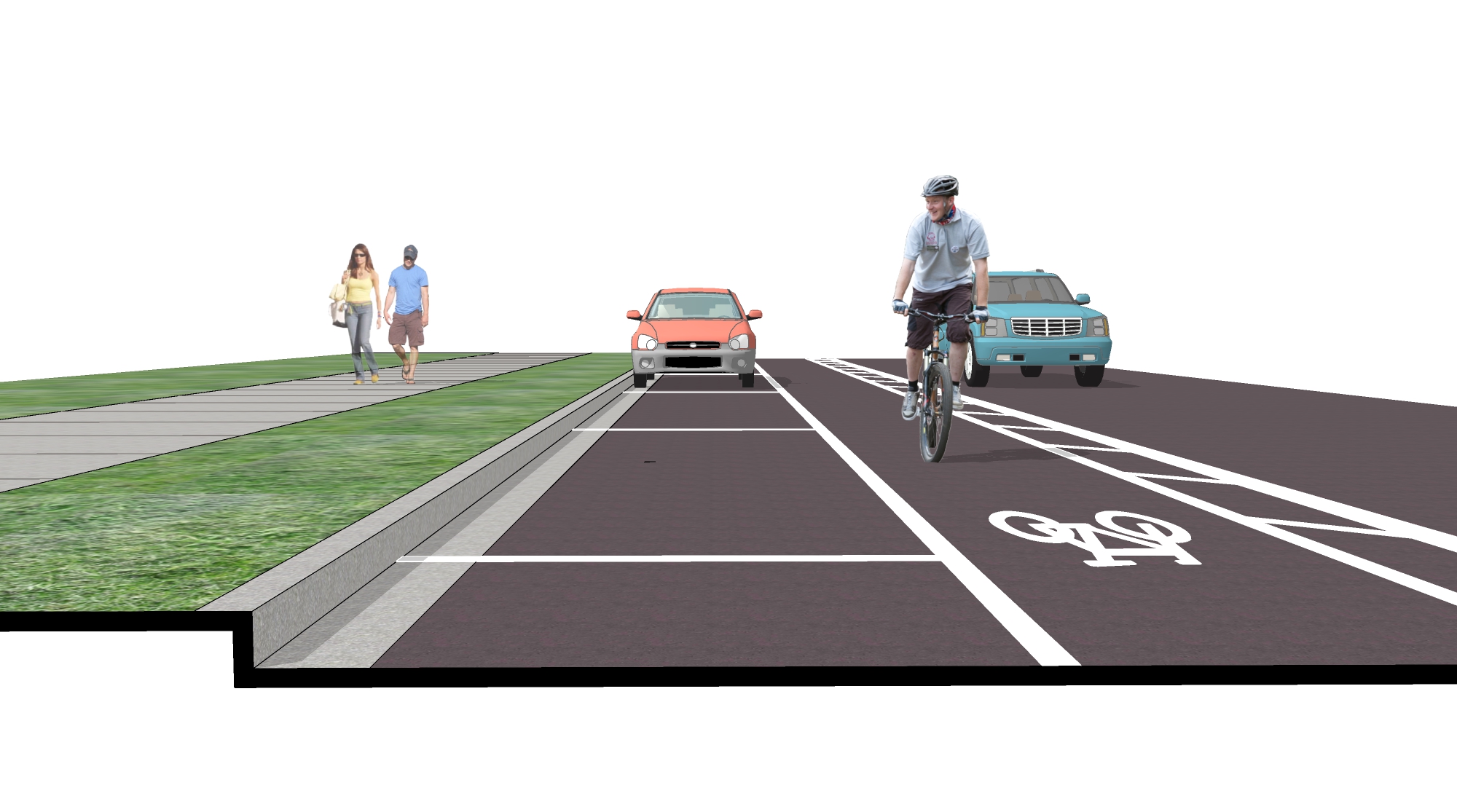
Buffered bike lane with automobile parking. Where street parking is present, the buffered bike lane is between the parked vehicles and the travel lane. Vehicles entering or leaving parking spaces cross the bike lane.
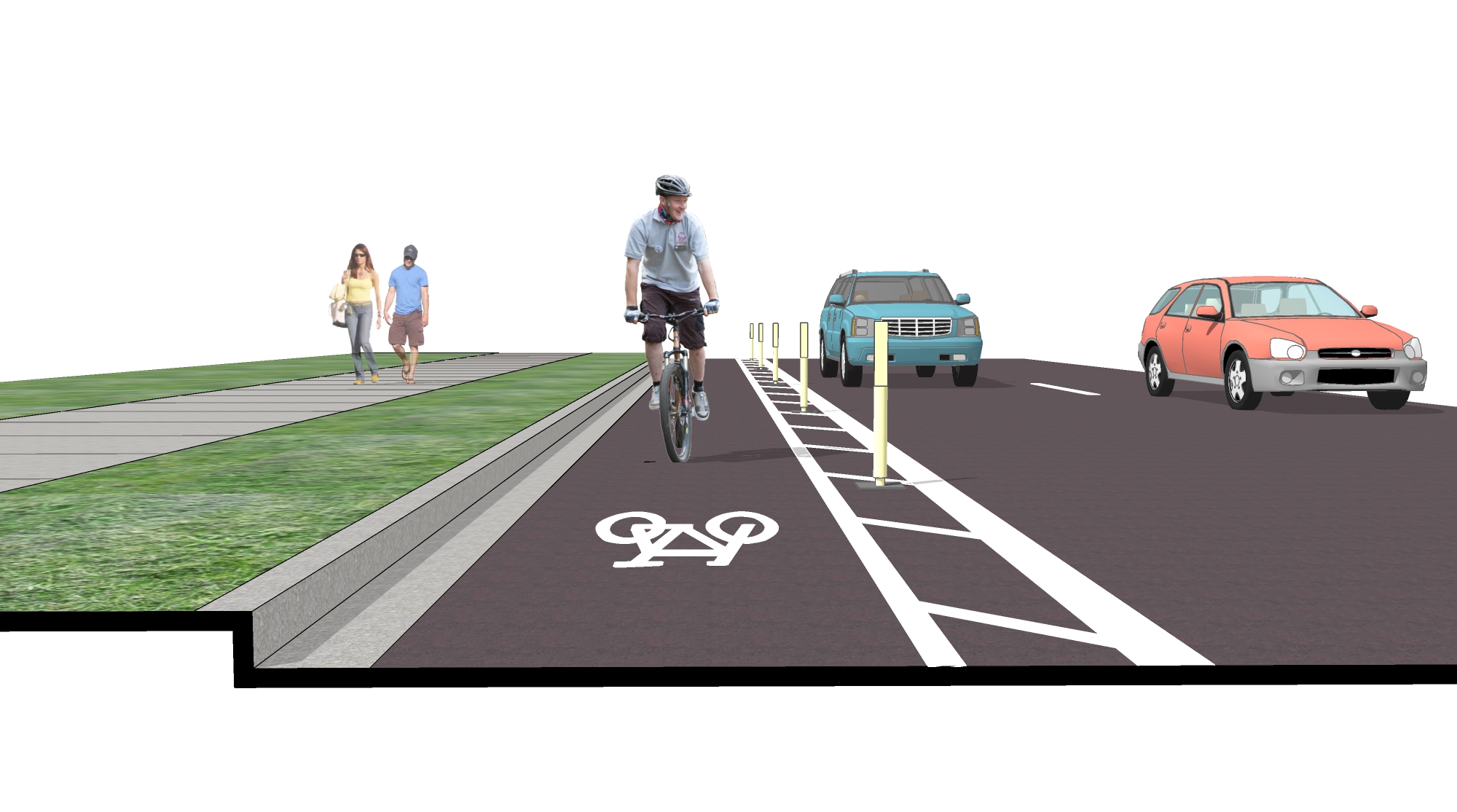
Buffered bike lane with flexible vertical posts. Flexible vertical posts installed at regular intervals in the striped buffer increase the visual separation between travel and bike lanes and alert drivers if they cross over into the bike lane.
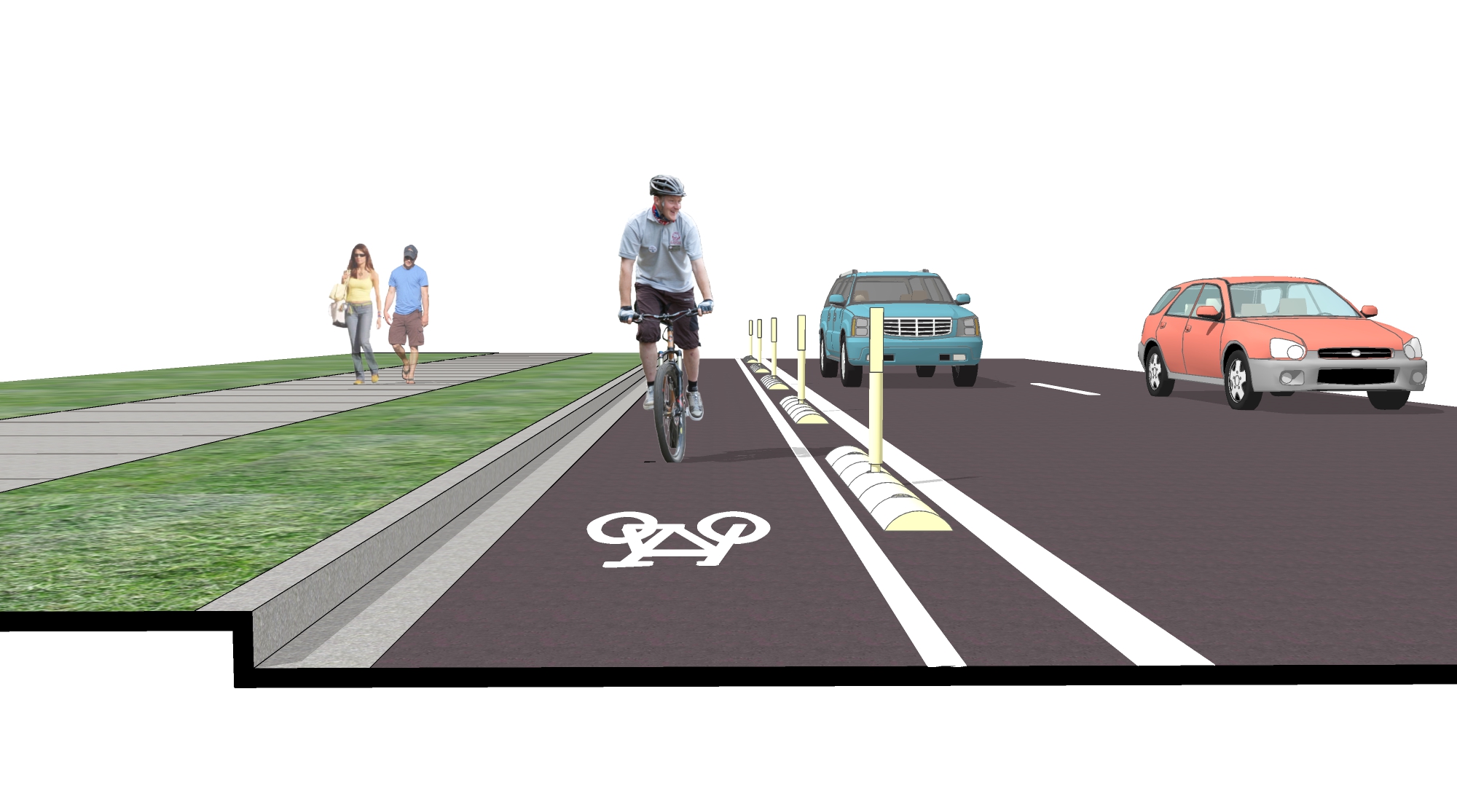
Buffered bike lane with "tuff curbs" and flexible vertical posts. Plastic "tuff curbs" alert drivers if they cross into the bike lane. They may be spaced to allow gaps for the cyclists to enter or exit bike lane.
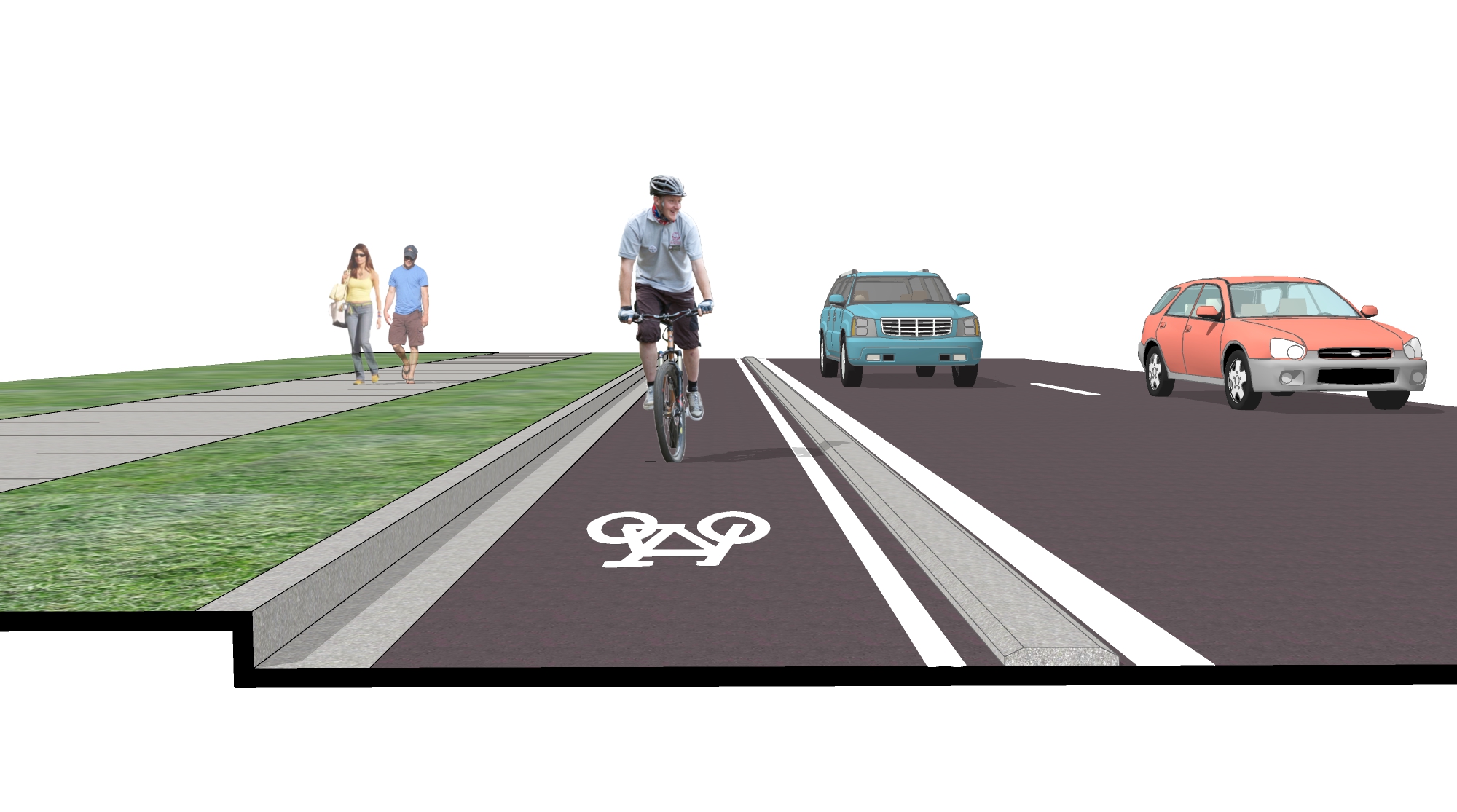
Buffered bike lane with low concrete curb. A more permanent installation, low concrete curbs provide a visual as well as limited physical separation. Low curbs are mountable to make the lane accessible to emergency and maintenance vehicles.
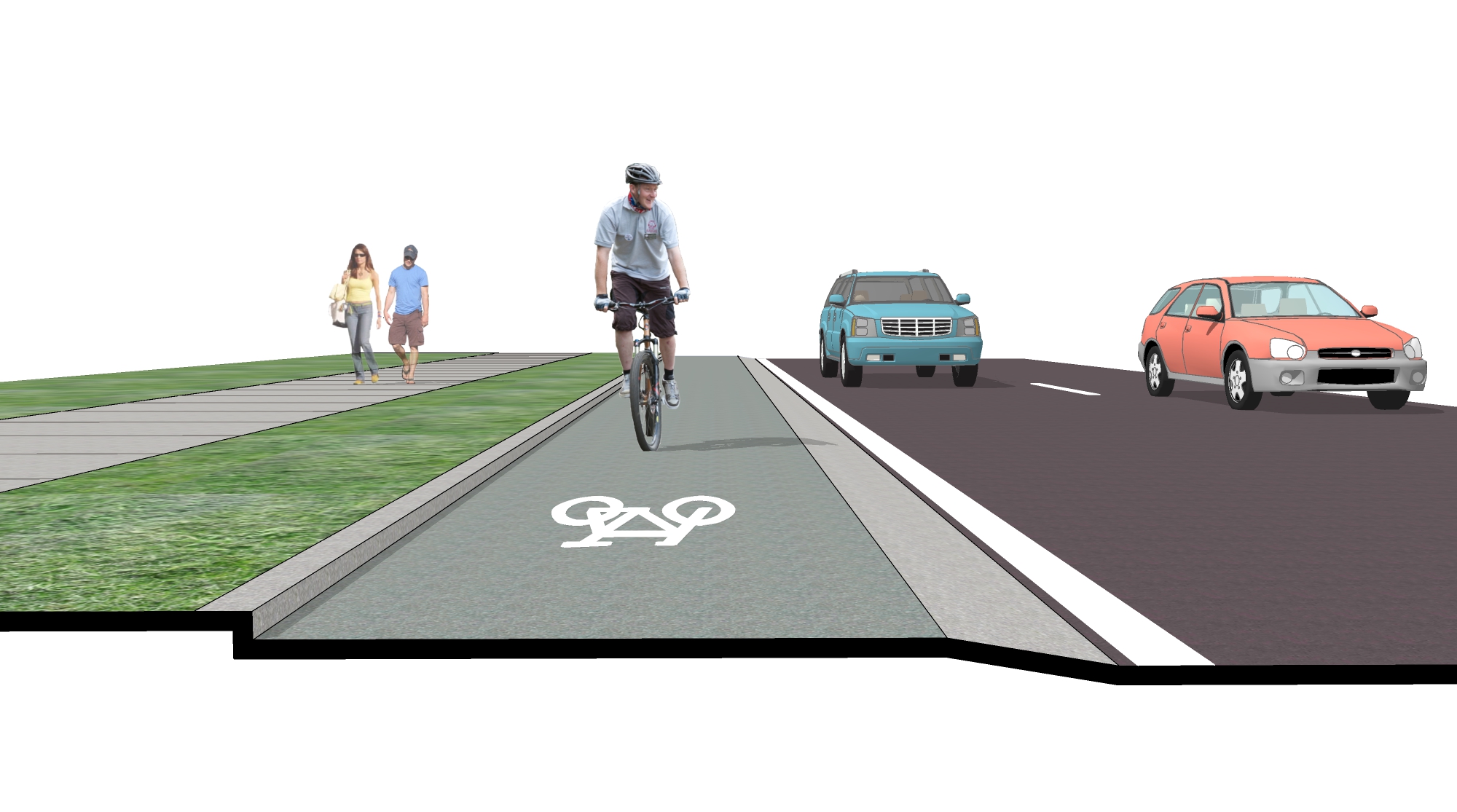
Raised bike lane. Raised bike lanes are separated from the travel lane by a sloped, mountable curb, placing the bike lane about 3 inches above road surface. The curb provides both visual and limited physical separation.
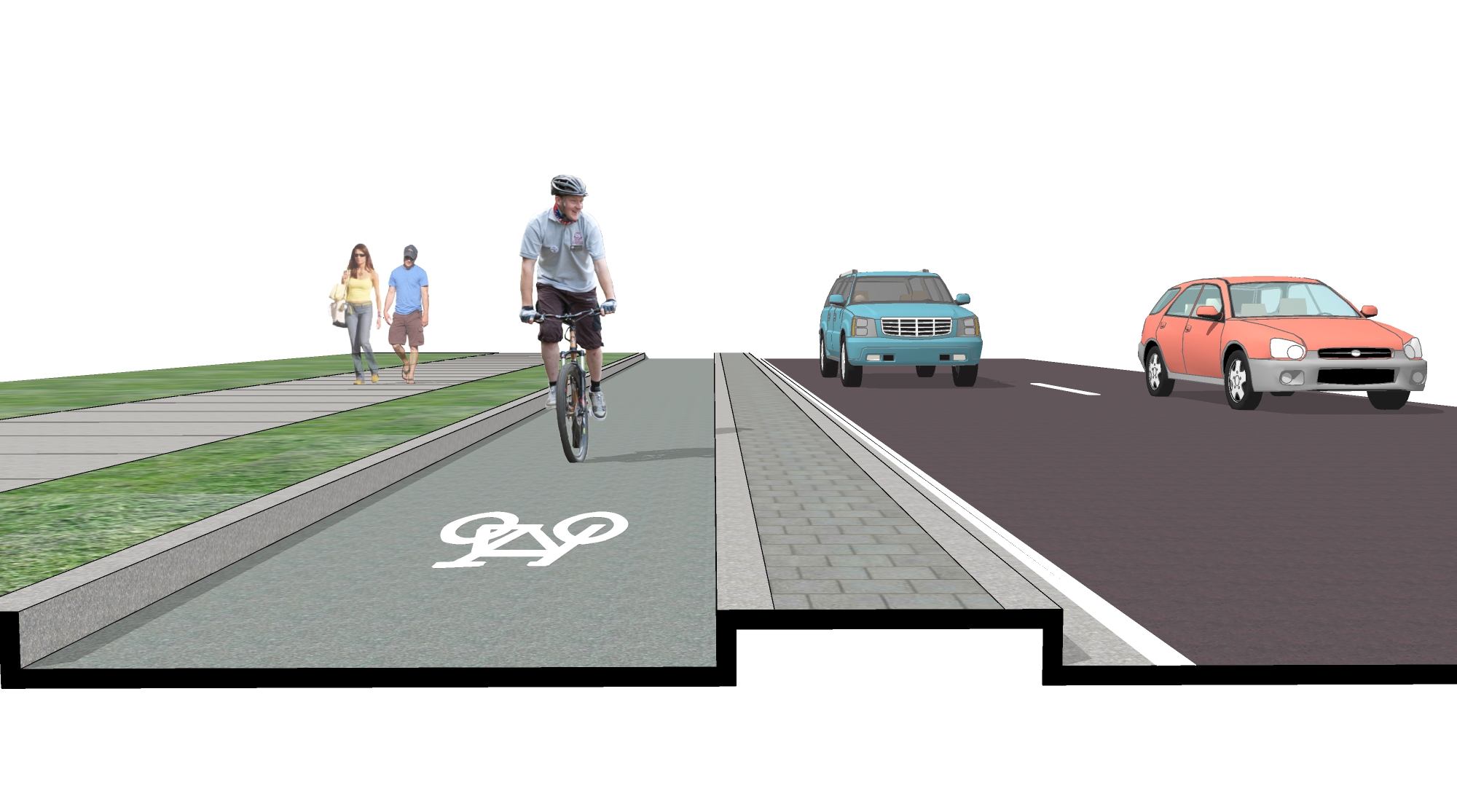
Cycle track with curbed median. Cycle tracks with curbed medians are physically separated bike facilities. Medians may be paved or landscaped. They provide a high level of physical separation for bicyclists but cannot be accessed by traditional maintenance vehicles.
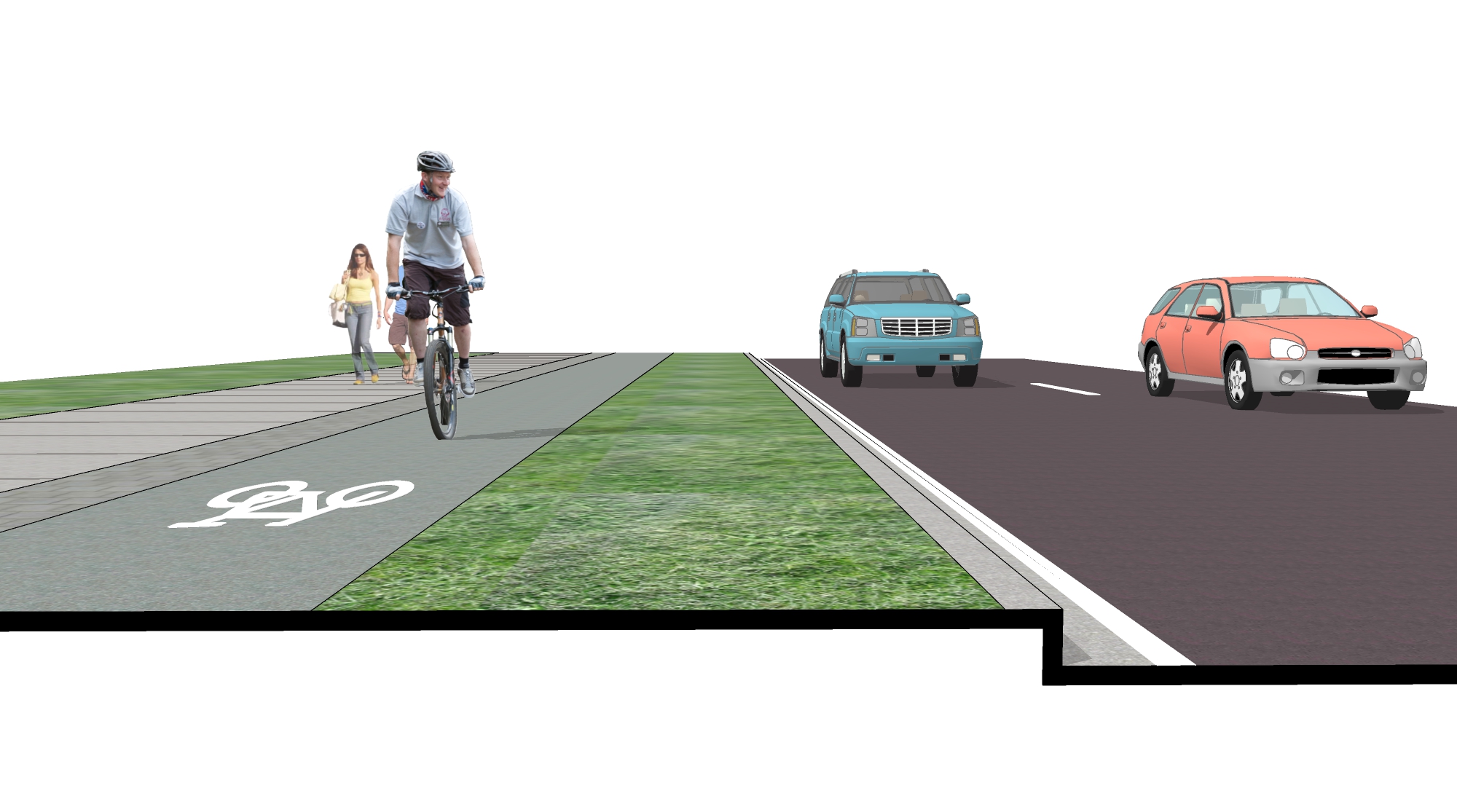
Cycle tracks at sidewalk level. These are raised and located next to or near the sidewalk and may be buffered by a paved or landscaped strip. They provide a high level of physical separation for bicyclists but cannot be accessed by traditional maintenance vehicles.